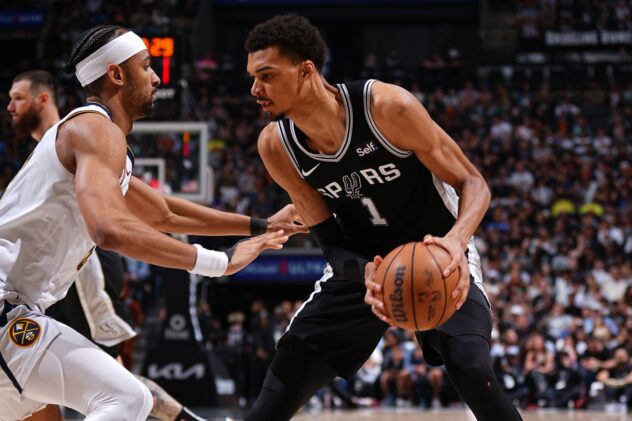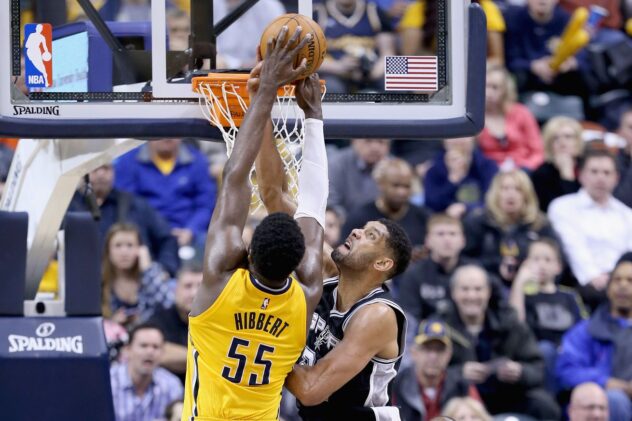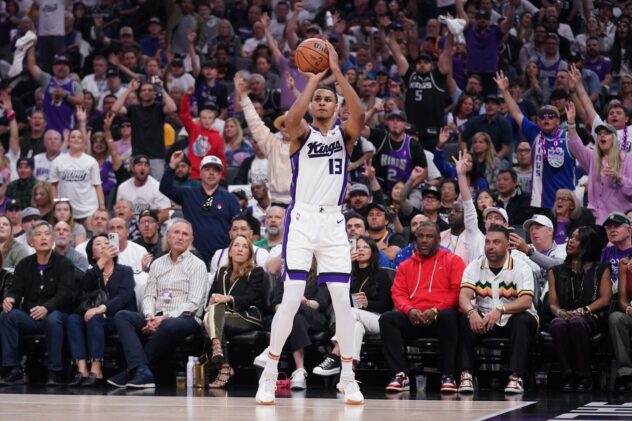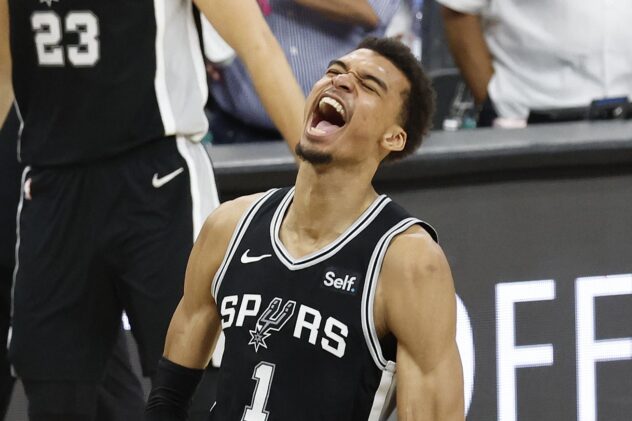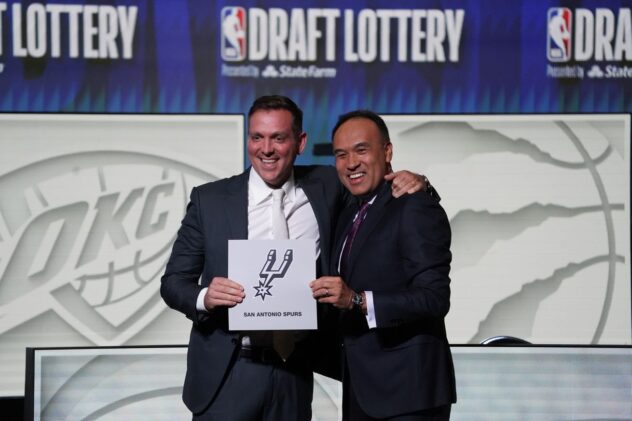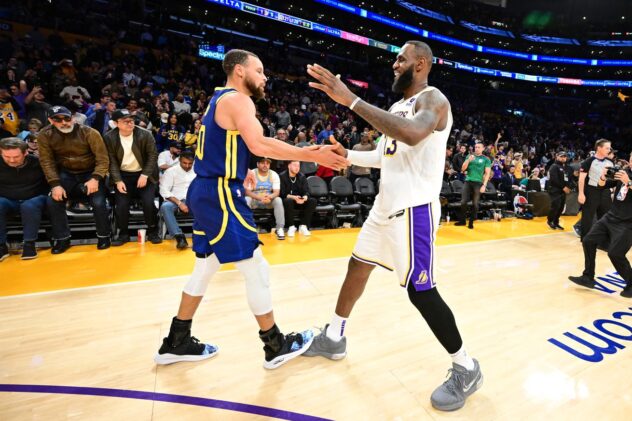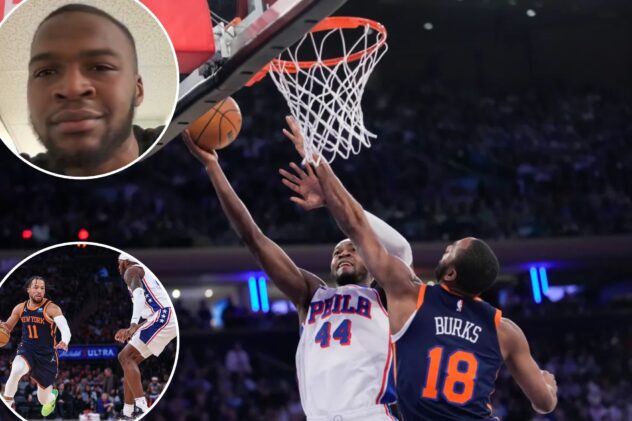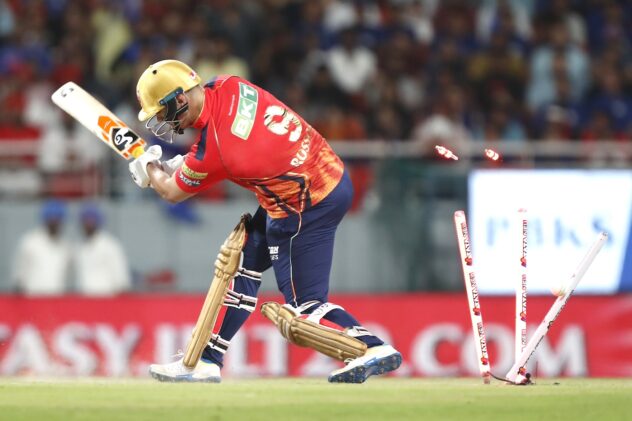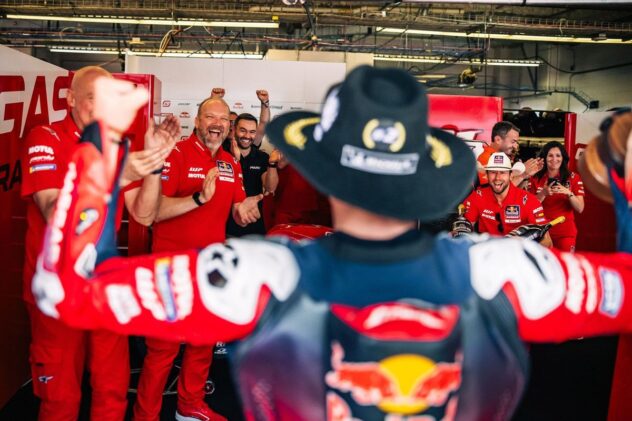How Lonnie Walker and Jakob Poeltl led the Spurs defense in victory
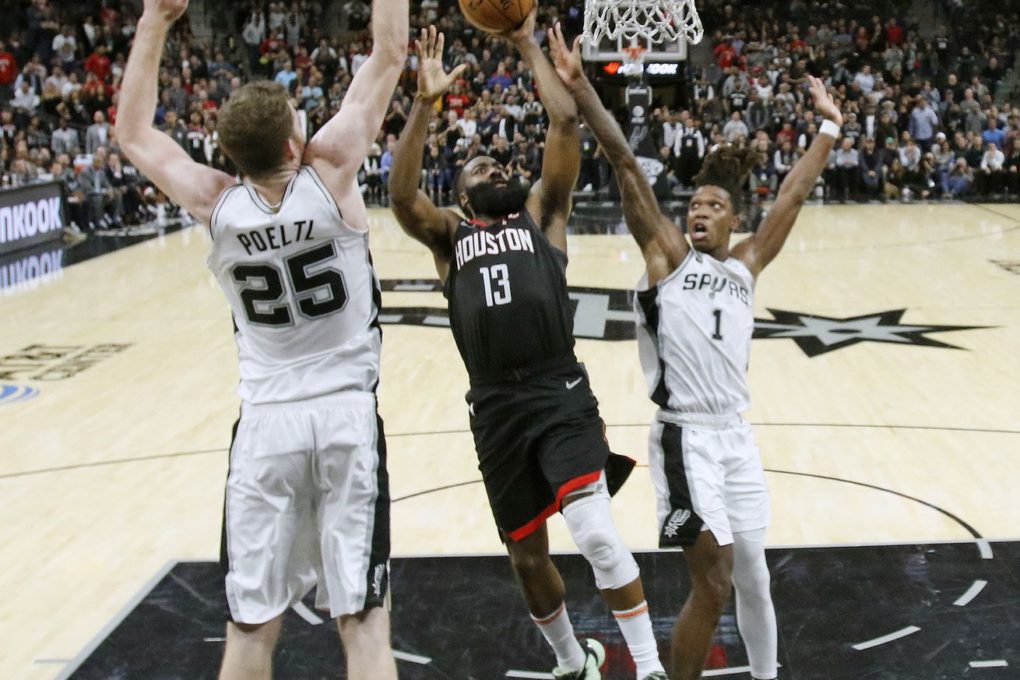
Photo by Ronald Cortes/Getty Images
With Russell Westbrook’s help, of course.
Maybe the Spurs should only play good teams. No offense to the Pistons, but what happened in San Antonio against the Clippers on Friday and against the Rockets last night bears little resemblance to the 48 minutes of shoot around that broke out in Detroit on Sunday afternoon.
It’s not that the Spurs turned into some perfect defensive machine in either case, but they competed in a way that has been absent for most of the season. Against the Clippers, the missing ingredient seemed to be just that: a team wide desire to win. But against the Rockets, that desire was personified by the play of their 2nd year guard, Lonnie Walker IV. If you’re reading this, you’ve certainly already seen the highlights (and if not, here you go).
So, let’s talk about his impact on the other end of the floor. Lonnie showed in the Spurs’ preseason victory over this same Rockets’ team that he had the potential to match up as well as anybody with James Harden. Harden, who’s having one of the most impressive offensive seasons in history, averaging nearly 39 points per game, seems like a disaster waiting to happen when combined with the Spurs’ porous perimeter defense.
But with Lonnie in the lineup, the Silver and Black held their own, giving up just 109.9 points per 100 possessions to the league’s 3rd best offense. Even more impressively, they held the Rockets to their 2nd worst eFG% of the season, at 43.7%. Were it not for Harden having the best free throw shooting night in NBA history, hitting all 24 of his attempts, the Spurs might not have needed extra time to take this one home.
Harden, as usual, was magnificent. Despite hitting only 11 (12?) of his 38 shots, the Beard managed to put up his 3rd 50 point game of the season to go along with 9 rebounds, 6 assists and 4 steals. To call the Spurs’ defensive game plan successful in the face of Harden’s box score requires a little explanation.
First and foremost, Lonnie didn’t do it alone, though he was easily the the team’s best option, earning him the unenviable task of checking Harden for almost all of the last 18 minutes of game time. But just behind him, and each of the other Spurs’ defenders who got a crack at the job, the entire Spurs’ defense was oriented towards #13 on every offensive possession.
Check out the difference in where Bryn Forbes and Derrick White are in help position when Harden has the ball…
And where the Spurs are when Russell Westbrook has the ball.
/cdn.vox-cdn.com/uploads/chorus_asset/file/19429778/BF_on_an_island.jpg)
That’s not a mistake. In perhaps an even bigger upset than the Spurs winning this game, the team actually executed the same defensive assignment the same way for almost all of the game’s 58 minutes of action.
The plan was to show bodies to Harden to try to get the ball out of his hands, and that deep help position Bryn and Derrick were in was a key part of it. Not only did the Spurs leave Bryn, noted shut down defender, alone on an island for almost the entire game against the 2016-17 MVP, they had Bryn help off him. And it worked.
Westbrook took 30 shots on the night, but made just 7. As it turns out, the Spurs’ best hope of slowing down the Rockets’ offense had little do with shutting down Harden, a seemingly impossible task. Instead, they laid out the red carpet for one of the Rockets’ least efficient players. So far this year, Westbrook is averaging 19.7 shots per game. The Rockets are now 6-5 when he shoots more than that, but 7-2 when he shoots less or doesn’t play.
The Spurs showed help on Harden’s pick and rolls, too. Jakob Poeltl, especially, did an excellent job of forcing Harden to get rid of the ball without giving up an easy dump off for a 4-on-3 opportunity. His work on three possessions in the middle of the 4th quarter led to the Rockets going away from the Harden / Clint Capela pick-and-roll for most of the rest of the game.
Though the tactic wasn’t always successful, the Rockets were clearly never comfortable attacking the numbers advantage. It disrupted the offense enough that Harden waved off screens several times in the 4th quarter and in overtime. The decision to isolate Harden down the stretch was certainly not out of character for the Rockets. The Trail Blazers are the only team (besides the Rockets as a whole, obviously) who use more possessions in isolation than Harden by himself, and he does so at a staggering level of efficiency, averaging 1.11 points per possession.
Still, when Harden isolates, it’s easier to focus the entire defense on his every move, and that’s exactly what the Spurs did. Down by 8 with 1:35 and Harden bringing the ball up court, the Spurs were nearly a sure bet to lose the game, but on that very possession, their strategy paid off.
The idea of showing bodies is more difficult to execute than it sounds. First of all, it depends primarily on having a disciplined defender who can ignore Harden’s menagerie of feints but react with force and precision when the threat is real. Staying focused through the whirlwind of fakes Harden throws with the ball and every part of his body is nearly impossible and that’s just a prerequisite to actually dealing with the attack that eventually comes.
Staying in essentially perfect defensive position for 8-10 seconds while one of the game’s most creative and efficient scorers pokes and probes for weaknesses has to be the most challenging assignment in the game today. Then, once he does begin to drive or goes to his step-back, that same defender has to contest without fouling the best foul-drawer in the history of the game.
But that’s exactly what Lonnie does here. Of course, Harden’s decision making wasn’t based just on Lonnie; there’s a lot more going on. The Spurs defensive approach also depended on the other perimeter players, like Bryn, to help much farther off their man than any team would typically expect. It also requires crisp backline rotations to get a rim protector over to contest the shot if there’s penetration without giving up an easy drop off, alley oop or kick out for three.
With Westbrook on the left wing and Harden iso’ing on the right wing, Bryn is actually closer to Harden at some points than his own man. His position is both deeper than the Spurs’ typical help position and farther over. That helps take away the drive middle.
Patty Mills, DeMar DeRozan and Poeltl are also on the weakside, and with Capela in the dunker spot, Jakob will easily get to the rim before Harden if he drives baseline. The question then becomes whether DeMar, Patty and Bryn can clean up the rotation behind the help. For most of the 4th quarter and overtime, the answer was yes. The Rockets punished the Spurs’ small lineup with offensive rebounds, but didn’t get many of those easy one pass outlets.
Here, the combined effect of the Spurs defensive execution over the previous 6 minutes wins the possession with 5 seconds still on the shot clock. The moment Harden passes the ball to Westbrook, it has become a much less valuable opportunity for the Rockets, a theoretical shift in value that becomes concrete in just a matter of seconds.
Westbrook bricks the pull up three, and Jakob comes down with the rebound. DeMar pushes the ball in transition, and hits Lonnie streaking to the basket for an acrobatic alley oop layup.
The Rockets went away from isolation on their next play, with Harden screening for Westbrook at the top of the key.
Lonnie overhelps, leaving Harden wide open at the top of the key, and you can see Coach Becky Hammon’s frustration in the background. But Lonnie comes flying back in and then out of the play, forcing Harden to reset. Whether the resulting shot was just a wayward attempt on an off night, or Harden was mesmerized by watching Lonnie’s knees fly by at eye level is hard to say, but the result was the same.
Bryn grabs the rebound and chucks it ahead to Patty on the left wing. Patty drives and kicks it to Lonnie, who knocks down the wide open triple to cut the lead to 3 for the first time since the first half.
Harden isolated up top on the next possession, with a nearly identical outcome.
The Rockets balance the floor this time, hoping to free up some room for Harden to drive, but Bryn is all the way in at the left elbow. That’s especially important since Lonnie is shading Harden left slightly. With Lonnie refusing to give an inch and no daylight for penetration, Harden resorts to a deep and well contested step back three that catches the front of the rim.
Jakob pulls down the rebound and hands it off to Patty, who races up the court directly into a dribble hand off with Lonnie on the left wing. Lonnie pulls the trigger on a 26 footer of his own and it’s pure from the moment it leaves his hand.
With the score now tied and less than 10 seconds on the clock, there’s no question who’s going to have the ball.
Harden has to drive right because of how far in Bryn is and DeMar helps just enough to get Harden to pick the ball up. He’s off balance a little, making it difficult for him to gather and explode off the floor, so he has to resort to a floater that Jakob sends deep into the stands.
Those four defensive stands in a row gave the Spurs just enough rope to climb back into the game and send it to overtime. And they didn’t stop there. The Spurs continued to show on ball screens to get the ball out of Harden’s hands and helped far off the Rockets other perimeter players to deter Harden’s drives. Jakob’s work, both at the rim and out on the perimeter, deserves special attention. He was a monster shot blocker and rebounder and even did an excellent job defending Harden straight up on one possession. He was the linchpin of the whole operation.
It wasn’t perfect, and they needed a fair amount of luck — Harden could have easily hit more of his three point looks, no matter how difficult Lonnie and crew made it on him — but that’s basketball. The Spurs put themselves in position to win, and this time, it worked out.
How Lonnie Walker and Jakob Poeltl led the Spurs defense in victory
How Lonnie Walker and Jakob Poeltl led the Spurs defense in victory

